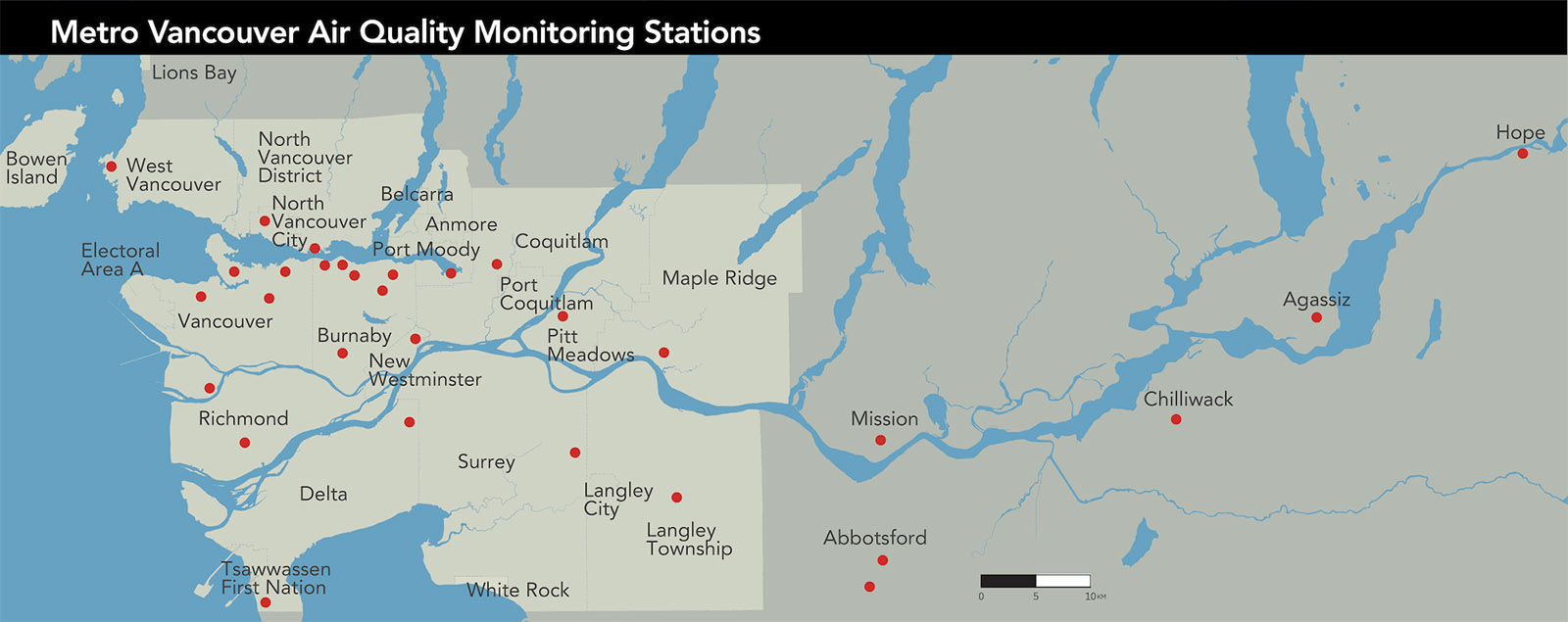Small sensors, big sensors: Understanding the difference
Small air sensors are ideal for residents to measure local air quality. They are relatively inexpensive, easy and fast to install, and many of them can be installed in a specific place to gather large amounts of data to provide a detailed look at air quality patterns in a particular community. Small sensors can also be deployed quickly in emergency situations if immediate and short-term air monitoring is needed. However, sensor performance, accuracy, life span, and ability to function in extreme weather conditions, can vary widely from sensor to sensor.
Metro Vancouver operates and maintains instruments to measure ambient air quality that are more sophisticated than small air sensors. These instruments, known as reference monitors, meet strict performance standards for air quality measurements.

While more expensive and time-consuming to install and configure, the reference monitors housed in Metro Vancouver’s air monitoring stations collect comprehensive data that can be used to track long-term trends in air quality, summarized each year in an
air quality monitoring report. Trends and annual snapshots of the region’s air quality help guide new policies to protect and improve our region’s air quality, and evaluate the effectiveness of existing policies.